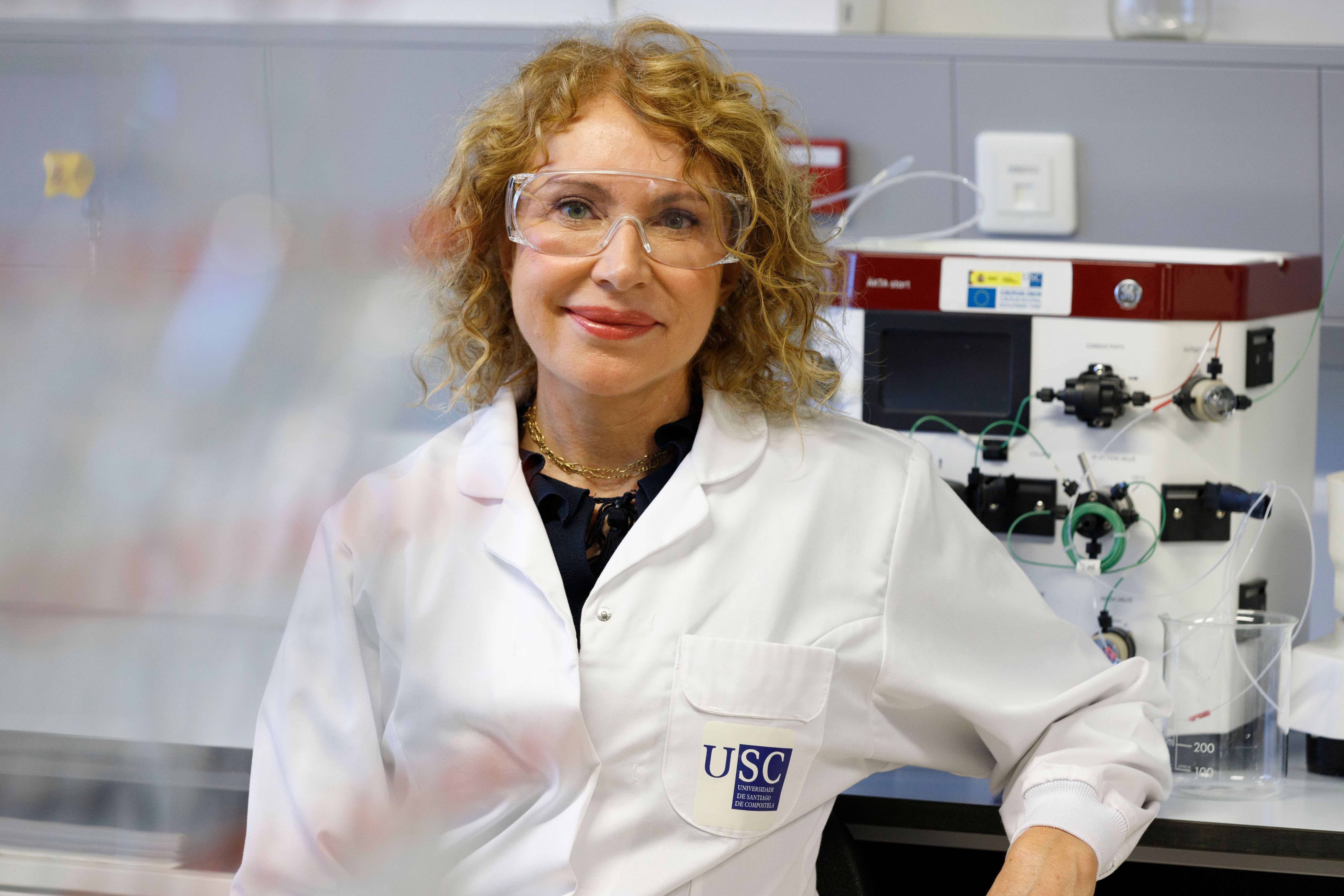
Latest information

Interview with Mabel Loza, Professor of Pharmacology at the University of Santiago de Compostela and coordinator of the Biopharma research group.
Mabel Loza is one of the most outstanding personalities of the Galician research scene. She directs the Biofarma research group, focused on the development of R&D&I projects in the initial phases of drug discovery, being a reference in Spain in this field. In his work as a professional, his global vision of programs oriented from the beginning to the patient's needs and creating public-private bridges to achieve them stands out.
What are the main lines of research of the Biopharma group?
Our USC Biopharma/Innopharma research group, of ERIC IU-OPENSCREEN high drug screening capabilities, focuses its research on translational pharmacology applied to early drug discovery and human health. It includes:
- Identification and validation of therapeutic targets: The identification of new drug targets is a necessity in the search for new, more effective and safer therapies.
- Development of translational in vitro models: One of the causes of the failure of many compounds when they reach clinical phases is the lack of translationality of pharmacological trials.
- Management of drug candidate compound collections: This activity ensures the integrity of the compounds that make up the chemolibrary.
- Miniaturization and assay automation: One of the initial phases of drug discovery is the identification of hits, in which it is often necessary to study chemolithographies of thousands of compounds to identify those that show activity on the target or phenotype, and serve as a starting point for further chemical development to optimize their efficacy and safety properties.
- Hit identification: The search for chemical starting points in drug discovery programs requires the execution of high-throughput screening (HTS) campaigns using automated and miniaturized assays.
- Design and execution of screening assays to preclinical candidates: The Biofarma group and the Innopharma platform have extensive experience in the development of preclinical screening assays to advance new compounds to preclinical regulatory candidates.
- Identification of biomarkers for diagnosis and prognosis of pathologies and response to treatment: Precision medicine leads to the continuous search for markers that allow a more precise diagnosis of the pathology, stratification of patients and prediction of the therapeutic response of patients.
- Development of target engagement markers: A key point for the approval of a drug by regulatory agencies is to have a measure that makes it possible to attribute the therapeutic effect of a new drug to its interaction with the pharmacological target, known as target engagement.
What types of drugs do they develop?
We focus on the development of low molecular weight drugs by directly connecting all phases of the drug discovery process until they reach clinical trials with patients. We are a multidisciplinary group with a consolidated scientific trajectory in intensive R&D and we have reached 17 clinical trials with new drugs in public-private collaborations.
On the road from university research to the market, what do you think are the keys to success in knowledge transfer?
In our experience, the keys are multidisciplinary teams focused on a roadmap managed on the basis of milestones and a timeline.
Therefore, we developed a working methodology for our R&D programs managed in this way oriented to disruptive academic research projects in early stages of drug development that are governed by short-term milestones ("go/non-go" experiments), set in a roadmap that is decided in collaboration with the principal investigator and pharmaceutical companies.
Another element is public-private collaboration, incorporating pharmaceutical companies from the beginning of the process and working together with academic researchers, always focusing on the needs of patients.
All this allows us to shorten lead times by more than 60% in this long process from drug discovery to clinical trials.
The Xunta promotes public-private collaboration instruments such as the Joint Research Units. What is the contribution of close collaboration between science and business?
The UMis favor collaboration between research organizations and the business community to jointly develop and coordinate research, development and innovation activities aligned with strategic objectives. We think it is a successful model and in fact we work in Public Private Partnership (PPP) with it both in the calls of the Xunta de Galicia and in independent structures, but with the same format.
Similarly, another innovative and pioneering instrument that shortens time and makes processes more efficient is the Business Factories. In our case, we collaborate with the Kaertor Foundation and several pharmaceutical companies and patient associations in the Business Factory Medicines.
How do you assess the current situation of the Galician biotechnology sector?
As a situation of optimal growth with great opportunities due to the pioneering projects that are being carried out, both in the public and private spheres, and especially in public-private collaboration. Galicia is also included in the Complementary Plan for Biotechnology Applied to Health as one of the 7 strategic communities in this area in Spain.
Biotechnology is key to respond to the challenges and opportunities framed in the Smart Specialization Strategy (RIS3) Galicia. What opportunities are opening up for life sciences and their impact on people's well-being and health?
The possibilities opened up by biotechnology in the medium and short term represent a revolution in the health and welfare of people, very well framed in the RIS3 strategy of Galicia.